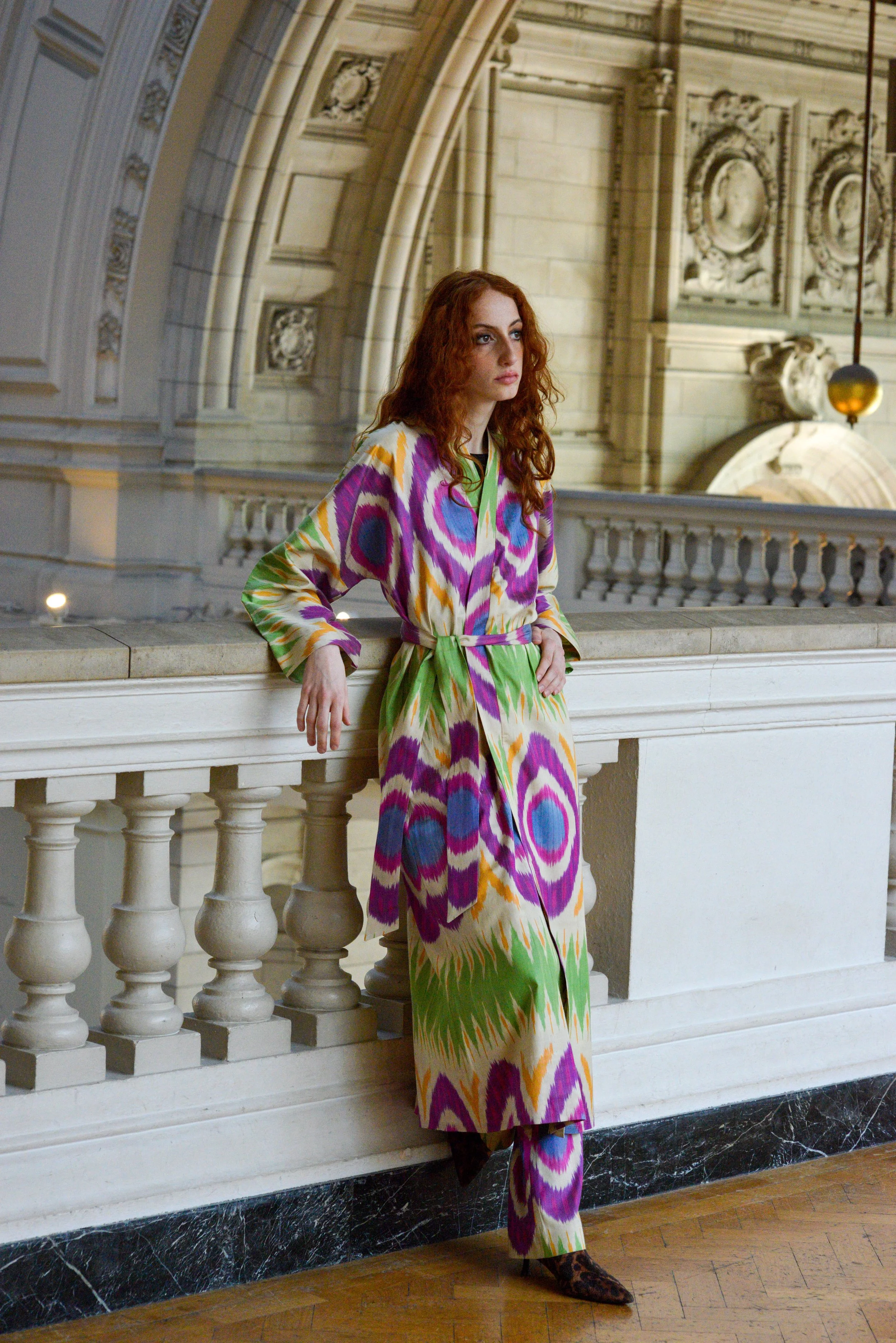Artisan-Made Fashion: The New Definition of Luxury
When we talk about “luxury fashion,” most people think of Paris, Milan, or New York. Yet the true essence of luxury is time, skill, and heritage, which have always been in the hands of artisans across the Globe. From Ghanaian Kente weavers and Peruvian alpaca knitters to Indian block printers and Mexican embroiderers, these communities have been creating luxury as long as, or even before, luxury houses existed.
Today, global artisan fashion is redefining what luxury means. Here are four reasons why it must be valued on the same level as legacy Western luxury brands.
1. Generational Skill & Cultural Heritage
Artisans are the guardians of centuries-old techniques. Skills are passed down through families and communities, often from Mother to daughter, since women were responsible for making clothing for their household. These practices carry cultural identity and storytelling, giving each piece a depth no factory can replicate.
Consider the intricate ikat weaving traditions of Uzbekistan or the embroidery of Oaxaca. Every stitch is infused with heritage, history, and care. As Business of Fashion notes, “craft is the soul of true luxury”. When we hold a handwoven textile, we are holding not just a garment, but generations of knowledge. Fashion insiders I’ve spoken with have started to discuss this more openly.
2. Sustainability as the Real Status Symbol
Artisans are leading, while many luxury brands are only just catching up. Artisan fashion operates within circular economies by using natural fibres, plant dyes, and waste-free production methods. These are not marketing strategies; they are cultural practices rooted in respect for the land.
Research shows that the fashion industry generates over 92 million tonnes of textile waste annually (UNEP, 2025). By contrast, artisans have long embraced low-waste, slow processes that ensure durability and repairability, an ethos now hailed as the “future of luxury.”
3. Exclusivity Through Uniqueness & Human Time
In mass fashion, uniformity is the goal. In artisan fashion, uniqueness is the value. No two handwoven scarves or naturally dyed garments are identical. These subtle differences are born of human hands and natural elements, which make each piece exclusive.
Luxury is often defined by scarcity. What could be more scarce and more valuable than a textile that takes weeks or even months to weave? Or embroidery requiring thousands of stitches? Consumers who already have one of everything are increasingly craving fashion for its emotional value rather than function. My deep belief is that the next big thing is authenticity.
Marikat 100% Silk Ikat Kimono Set
4. Provenance That Resonates Globally
Western luxury brands often rely on marketing to create a sense of story. But for artisan fashion, provenance is real. Each garment is tied to a place, a culture, and a community of makers.
From regenerative leather in Kenya to backstrap weaving in Guatemala, these practices anchor luxury in authenticity and transparency. As Vogue Business highlights, the luxury consumer increasingly seeks products that connect them with the people and processes behind the brand.
Final Thoughts
Luxury is not only made in Paris or Milan. It is woven in Accra, stitched in Jaipur, dyed in Oaxaca, and crocheted in Cartagena. The Global South has always been a powerhouse of true luxury: slow, skilled, sustainable, and storied.
As a fashion practitioner and advisor to artisans and ethical brands, I believe it’s time the fashion industry places artisan-made fashion, especially from the Global South, on the same stage as Western luxury houses. Because the future of fashion will not be defined by logos, it will be defined by heritage, the skills of the hands that make, and global equity.
Published on LinkedIn 23 August 2025
Photo Credits: Shubham Kakade (Photography) I Vinca Vanessa Shalim (Hair & Makeup) I Anisa Johnny & Xin Xin Wang (Styling & Concept Development)
#Newluxury #artisan #ecofashion #sustainablefashion
Source links:
https://www.voguebusiness.com/story/consumers/what-consumers-want-from-luxury-in-2025

